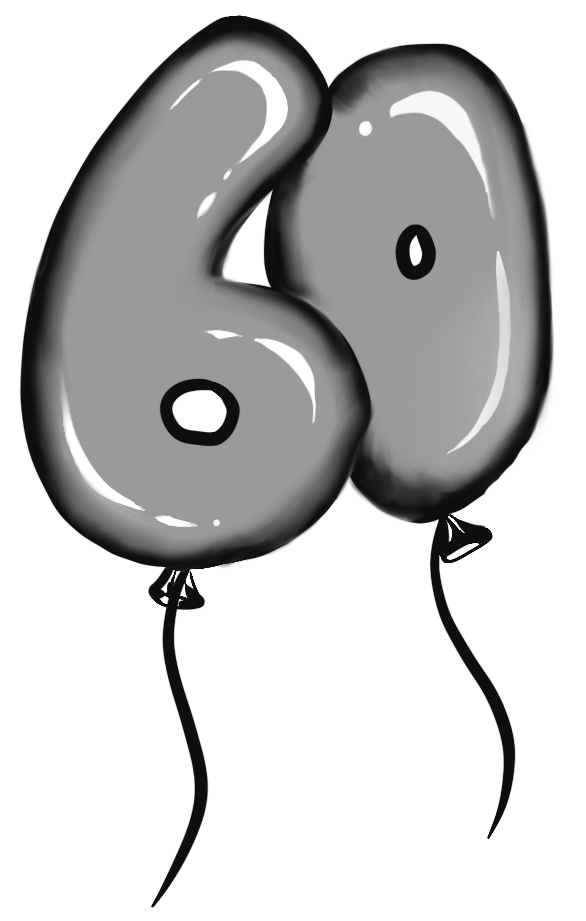College celebrates 60 years of Visual Arts Department
September 9, 2022
In 1962, the College appointed Thomas Cornell as its first full-time, tenured professor of Visual Arts, commencing the Visual Arts program, which would go on to produce artists like Abe Morrell ’77, Angus Wall ’88, Johannes Girardoni ’89 and Shaun Leonardo ’01. Today, the program celebrates 60 years and its tremendous growth at the College.
1962–1985: Founding of Program
Starting in the late 1930s, Professor of Art History Philip Beam offered drawing courses to complement art history courses. Although the Department of Arts offered similar studio courses throughout the years, its focus remained primarily on history and criticism.
The program initially focused on drawing, with one of four courses from the catalog taught each semester. The arrival of John McKee in 1969 added photography to students’ palettes. Gradually, the department welcomed architecture, 2-D and 3-D design and, by 1972, the course offerings had blossomed to six per semester.
1985–early 2000s: Stability and Change
Throughout the 1970s and 1980s, the division was a revolving door, struggling to retain and tenure new faculty. In response, the College appointed Mark Wethli, now A. LeRoy Greason Professor of Art, as director of the division in 1985.
With his arrival and a more organized structure, the division began to stabilize. Consistent course offerings in drawing, painting, printmaking and photography allowed students to build visual arts-focused majors. Supplementing Cornell’s focus on traditional drawing and painting techniques, Wethli encouraged exploration of contemporary art.
At the turn of the twenty-first century, the complementary trio of Cornell, Wethli and McKee, as well as other rotating adjunct positions, comprised Bowdoin’s Department of Visual Arts.
To further stabilize department governance and course offerings, Cristle Collins Judd, then Dean of Academic Affairs, created four new, full-time, tenure-track positions, which are currently held by Professors Mullen, Kolster, Scanga and Brown. With the emergence of digital media, another rotating half-time position was created in 2017.
2013–present: Steady Growth
The Visual Arts Center (VAC) was completed in 1975 to house the art history and the visual art divisions. However, the visual arts program’s steady expansion quickly outgrew the building’s limited space. Beyond that, studios were scattered in the VAC, Adams Hall, Burnett House, Fort Andross and the McLellan Building (now Brunswick Town Hall). In 2006, a self-evaluation conducted by the College recognized this issue but concluded that a new space remained part of the “long-range plan.”
The closing of the Longfellow School provided the department with an unmissable opportunity to settle down. In 2013, the visual arts program formally relocated to the Edwards Center for Art & Dance, allowing studios for painting, drawing, photography, sculpture, printmaking and digital media to come under one roof, with additional spaces for faculty and the Dance department.
Having witnessed the program’s evolution, Wethli suggested that this move marked a sea-change for the program.
“The interaction between our disciplines has become much more integrated, and our physical identity as a department much better established,” Wethli said.
Sixtieth Anniversary & Looking Forward
In celebration of the program’s Sixtieth anniversary, the Bowdoin College Museum of Art (BCMA) has dedicated a section of its “At First Light: Two Centuries of Artists in Maine” exhibition to feature five Bowdoin artist-professors: Professors Wethli, Mullen, Scanga, Brown and Kolster.
“We are thrilled that this installation of the work of Bowdoin’s exceptional visual arts faculty coincides with the sixtieth anniversary of this important department, which does so much to inspire the campus with its creative vision,” Anne-Collins Goodyear, co-director of BCMA, said.
This 60th anniversary also offers the program an opportunity to contemplate its evolution and outlook. Reflecting on the program’s growth, Wethli suggested that it has gotten a clearer sense of its educational purposes and how they fit within the greater liberal arts.
“We’d like to think that we are not an accessory to the other parts of the curriculum, but that the visual arts have things to teach us that are just as vital, just as significant and meaningful as any other discipline.”
As the current division chair, Professor of Art and the Chair of the Visual Arts Division Mike Kolster remains steadfast on this mission.
“We hope to maintain our core commitment to teaching close?observation of the world as a means to develop habits of thought that examine and, when appropriate, reject habitual responses and engrained biases possibly clouding our vision.”


Comments
Before submitting a comment, please review our comment policy. Some key points from the policy: